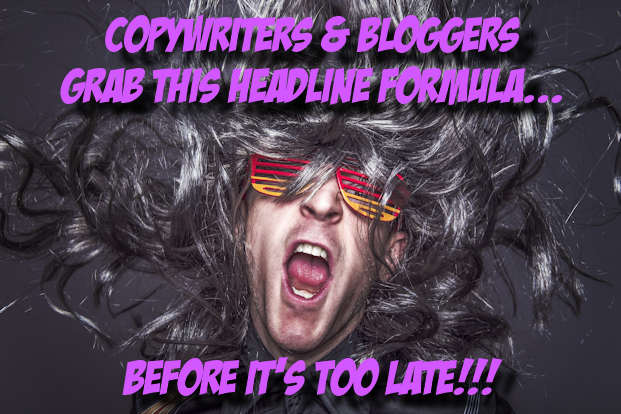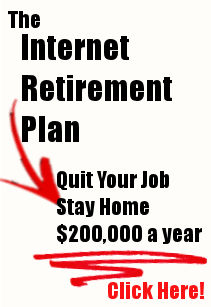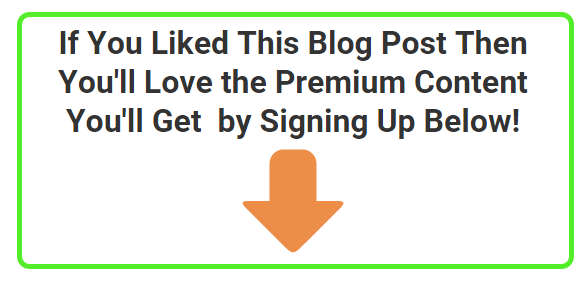If you know anything about copywriting or writing blog posts, you know that you have one big obstacle in front of you.
In marketing, your target audience needs to see your marketing message at least nine times before they begin to recognize you’re even alive.
With writing a blog post, or sales copy you have just one shot.
That means your headline MUST connect with your reader within seconds, or you’ll lose them forever.
[Tweet theme=”basic-white”]your headline MUST connect with your reader within seconds, or you’ll lose them forever[/Tweet]
The question is: How do I immediately connect with my readers so they don’t move on?
In this post, I’m going to hand you a headline formula you can use so that you can grab the eyes and curiosity of your readers and keep them on your post.
The Magic Formula that Will Raise Your Conversion Rates
Good copywriters like to follow a formula that works for them. Usually, they like to use formulas that are easy to remember. One I like to use is this:
B+C=I, or Benefit plus Curiosity equals Interest.
I’ve written about this headline formula in previous posts.
This time, I’m going to teach you another headline formula that will make headline writing even easier.
This is known as the 4 U’s and it has been popularized by great copywriters like Bob Bly and Michael Masterson.
Very simply the Four U’s in this formula are Urgent, Unique, Ultra Specific, and Useful.
Let’s now take a look at each component of this formula in detail.
Understanding the 4 U’s Formula
Urgent ― Every car salesman knows that the second you step off the car lot, you’ll never come back. That’s why they’ll tell you that the “Super-special Deal of the Day” is going to end the second you step off of the lot.
So if you want your target audience to keep reading, you need to create a sense of urgency in your headline.
Speaking of selling cars, look at some of these headlines taken from ads from localized car dealerships. Notice how they use urgency in their direct mail pieces and newspaper ads:
Tax Time is Car Buying Time – Get In on Our Tax Sale This Week!!!
Here’s another one:
Summer Clearance Event!
0% Financing During July’s Special Clearance Prices!
Or:
When They’re Gone – They are Gone!
Hurry and Grab an Acme Stellar Before We Phase Them Out!!!
(As if they’re not going to have any more cars for you to buy…)
More Tips on Using This Formula
If you can create a sense of urgency with a time-sensitive sale or by indicating you’ll run out of your product, you’ll increase the chances of your prospect reading your offer or post.
The next “U” in our Formula is Unique.
Your headline needs to make your product or service unique in the market place.
You can do this one of two ways.
If your product has a new angle or is being marketed in a different way, it’s easy to make it unique. If your product or service is something that’s been around for a while, you need to put a “fresh face” on it.
Here’s a few examples:
Great New Discovery Kills Kitchen Odors Immediately!
Makes Indoor Air ― “Country Fresh”
Let’s think about the headline above for a second.
“Great New Discovery” is not only unique but adds an element of curiosity to it. It causes your eyes to search the rest of the article, even if you’re not interested in an air freshener product.
Look at this one:
12 Special Tax Strategies that are Making Doctors Rich
“Special Tax Strategies” indicate that somehow there is an overlooked tax rule or loophole that you can use to save money. So the word “Special” is key in this headline.
This idea can be used very effectively in blog post headlines. By making your information “unique” in your headline, it will pull more readers.
Ultra-Specific is the next “U” in our formula and its purpose is to make sure that the reader knows exactly what we’re writing about. For example, take a look at these two headlines and look at the difference:
How to Write Headlines that Grab Readers
Versus
How to Write Headlines for Recreational Vehicle Blog Posts
The closer you can get to your audience and what they want to know, the better. If you look at the two headlines above objectively, you can easily see the difference.
The first one is very generic, while the second calls out a specific niche and venue.
Useful is the final “U” in our formula. Your headline must hint that you will provide something that the reader needs or wants to possess.
This part usually ties directly in with the main benefit of your copy. If your copy does not specifically target a main benefit to your reader, you need to rewrite it.
Writing a headline that reflects the idea that your audience will gain a benefit from your post or ad copy is paramount. It is probably the strongest element in your headline.
The Simple Technique for Writing Effective Headlines
One of the most important things you can do when writing any copy is to make sure that you do intensive research on the front end.
Without knowing as much as you possibly can about the product or service you are writing about, you are dead in the water.
The three most important things you must know before you begin writing is:
- Who is my target audience?
- What benefits will my product or service offer the reader?
- Why will my audience want to read my post/article/sales letter or buy my product?
The Simple 5 Step Headline Formula
Step 1: Write a sentence or two that gives the reader the heart of what you want to tell them. You want a sentence that gets right to the point, so you’ll probably need to refine it a time or two after you write it.
Step 2: Use your research to look at similar headlines that have been created. Go through all of the research you have collected and see if you can find the main benefit that your readers will probably focus on.
Rewrite your headline so that it contains that it reflects that element.
Step 3: If you are unable to get started writing a headline, make a list of words that would describe your subject. For example, if you are writing a blog post about recreational vehicles, you could make a list like this:
- Vacation
- Fun
- RV
- Camping
- Relax
- Driving
- Etc.
Build a Swipe File to Get Ideas
You could very quickly make a list that would probably be very extensive. While you’re writing, you’ll probably come up with all sorts of ideas that are spurred by making your list.
Step 4: If you haven’t built a swipe file of headlines, now would be a good time to do so. Swipe files are collections of headlines, blog posts, and advertising copy pieces that you’ve collected.
Hopefully, you have collected the pieces that have stood the test of time and have high conversion rates.
Once you’ve pulled these up on your computer you can use them to generate similar headlines that would generate interest in your copy.
I’m not saying you should plagiarize the headline or copy, but use the essence of it by writing something similar, or at least in a similar tone.
Here’s a good example of what I mean. Back in the ’50s, an awesome copywriter named John Caples wrote a headline that many copywriters consider the ultimate. It went like this:
“They all laughed when I told them I could play the piano. But when I started to play…”
I have heard the language tutoring program, Rosetta Stone, use that very same line on their commercials ― tweaking it to match their product.
It went:
“They all laughed when I told them I could speak French. But when I started to order my meal in French…”
So, you can use other ideas taken from great copywriters, just don’t use the exact words, and make sure you make them fit your subject.
 Step 5: Rinse and repeat back to Step 1 until you’re satisfied with your headline.
Step 5: Rinse and repeat back to Step 1 until you’re satisfied with your headline.
If you write a satisfactory headline in 5 minutes flat and you are happy with it, great. If not, put some sweat into it. I’ve read that some copywriters and bloggers will write 50 or so those suckers before they are satisfied with it.
Writing is a skill that requires you to use your own judgment and insight. If you feel like you’ve written a satisfactory headline, move on.
Chances are that you could spend your most precious commodity, time, worrying about your headline too much.
Conclusion of Our Headline Formula Post
David Ogilvy stated:
“On the average, five times as many people read the headline as read the body copy. When you have written your headline, you have spent eighty cents out of your dollar.”
No doubt a lot of the emphasis copywriters and bloggers place on writing their copy is on effective headlines.
However, don’t confuse a clever headline with a good headline.
Sometimes a dull sounding headline will hit the mark far better than a headline that’s cute or clever.
At the end of the day, converting prospects into buyers and paying clients is the metric that rules. Winning an award for a cool headline from a focus group will not help you hit your goal of increasing your revenue.
If you’re having trouble writing headlines, go back through each of the four “U’s” and ask yourself if it is possible to improve one of them.
You probably won’t be able to write a headline that’s stellar in all four categories, but you’ll do far better if you can at least nail a few of them down.
More Headline Formula Ideas
Hey, if this post didn’t help you on your quest to write great headlines, you may want to check out this video by copywriter and marketer Tony Gattari.
What did you think of this headline formula? Please share any ideas that you have on this subject in the comment box below.










